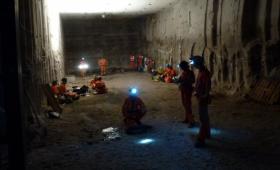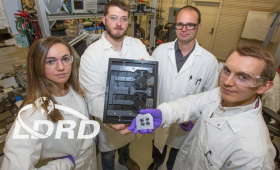Lawrence Livermore scientists and engineers have created the first research-grade, open-architecture multibeam metal 3D printer.
Science and Technology
in the News
Science and Technology
in the News
News Center

A paper in the Feb. 25 edition of the journal Nature Climate Change outlines three key climate events that signified a turning point.

We integrate silicon nanoribbon transistor sensors with an antifouling lipid bilayer coating that contains proton-permeable carbon nanotube porin (CNTP) channels and demonstrate robust pH detection in a variety of complex biological fluids.

A joint project will harness existing particle physics research techniques to remotely monitor nuclear reactors.

A multi-institutional team present evidence that massive volcanic eruptions in the Deccan Traps region of India contributed to the fall of the dinosaurs 66 million years ago.

Livermore scientists and engineers are combining mechanical computing with 3D printing as part of an effort to create “sentient” materials that can respond to changes in their surroundings.

New research shows that synthetic solid-state nanopores can have finely tuned transport behaviors much like the biological channels that allow a neuron to fire.

This book presents recently developed computational approaches for the study of reactive materials under extreme physical and thermodynamic conditions.



